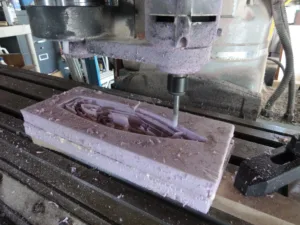Custom fiberglass molds are used in various industries to create detailed, repetitive shapes for objects ranging from automotive parts to artistic sculptures. Here’s a basic rundown of how these molds work and what they involve:

custom fiberglass molds
- Design and Prototype: The process begins with a design, typically developed using computer-aided design (CAD) software. From this design, a prototype is often made using a material that’s easy to shape and modify, such as clay, wood, or foam.
- Mold Making: Once the prototype (also known as a plug) is finalized, it’s used to create the mold. The surface of the prototype is treated to ensure that it’s smooth and non-porous, and a release agent is applied to help separate the mold from the prototype later. Layers of fiberglass and resin are applied over the prototype. This can be done by hand (lay-up method) or with the help of machines.
- Curing and Separation: The fiberglass and resin need to cure, setting into a hard, durable shape that retains the intricate details of the prototype. Once cured, the mold is carefully separated from the prototype.
- Production: The new fiberglass mold is now ready for use. It can be used to manufacture multiple copies of the original design. Resin and fiberglass are applied within the mold, similar to the initial mold-making process, to form the final products.
- Finishing: After curing, the replicated products are removed from the mold and may undergo finishing touches, such as sanding, painting, or installation of additional components.
Custom fiberglass molds are valued for their durability and the precision with which they can replicate details, making them ideal for both small-scale and industrial applications.
 info@unicomposite.com
info@unicomposite.com


























